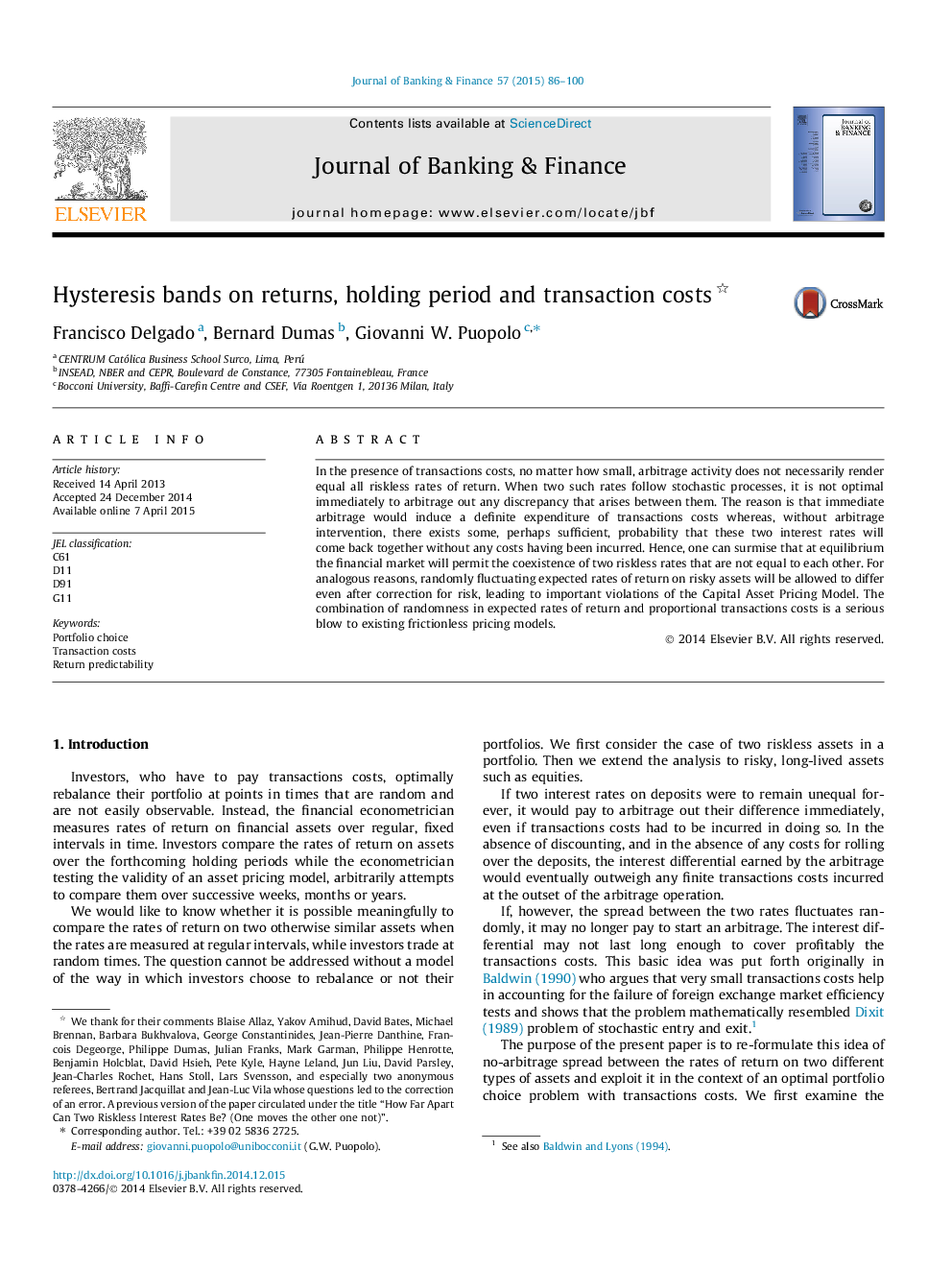| Article ID | Journal | Published Year | Pages | File Type |
|---|---|---|---|---|
| 5088611 | Journal of Banking & Finance | 2015 | 15 Pages |
Abstract
In the presence of transactions costs, no matter how small, arbitrage activity does not necessarily render equal all riskless rates of return. When two such rates follow stochastic processes, it is not optimal immediately to arbitrage out any discrepancy that arises between them. The reason is that immediate arbitrage would induce a definite expenditure of transactions costs whereas, without arbitrage intervention, there exists some, perhaps sufficient, probability that these two interest rates will come back together without any costs having been incurred. Hence, one can surmise that at equilibrium the financial market will permit the coexistence of two riskless rates that are not equal to each other. For analogous reasons, randomly fluctuating expected rates of return on risky assets will be allowed to differ even after correction for risk, leading to important violations of the Capital Asset Pricing Model. The combination of randomness in expected rates of return and proportional transactions costs is a serious blow to existing frictionless pricing models.
Related Topics
Social Sciences and Humanities
Economics, Econometrics and Finance
Economics and Econometrics
Authors
Francisco Delgado, Bernard Dumas, Giovanni W. Puopolo,
